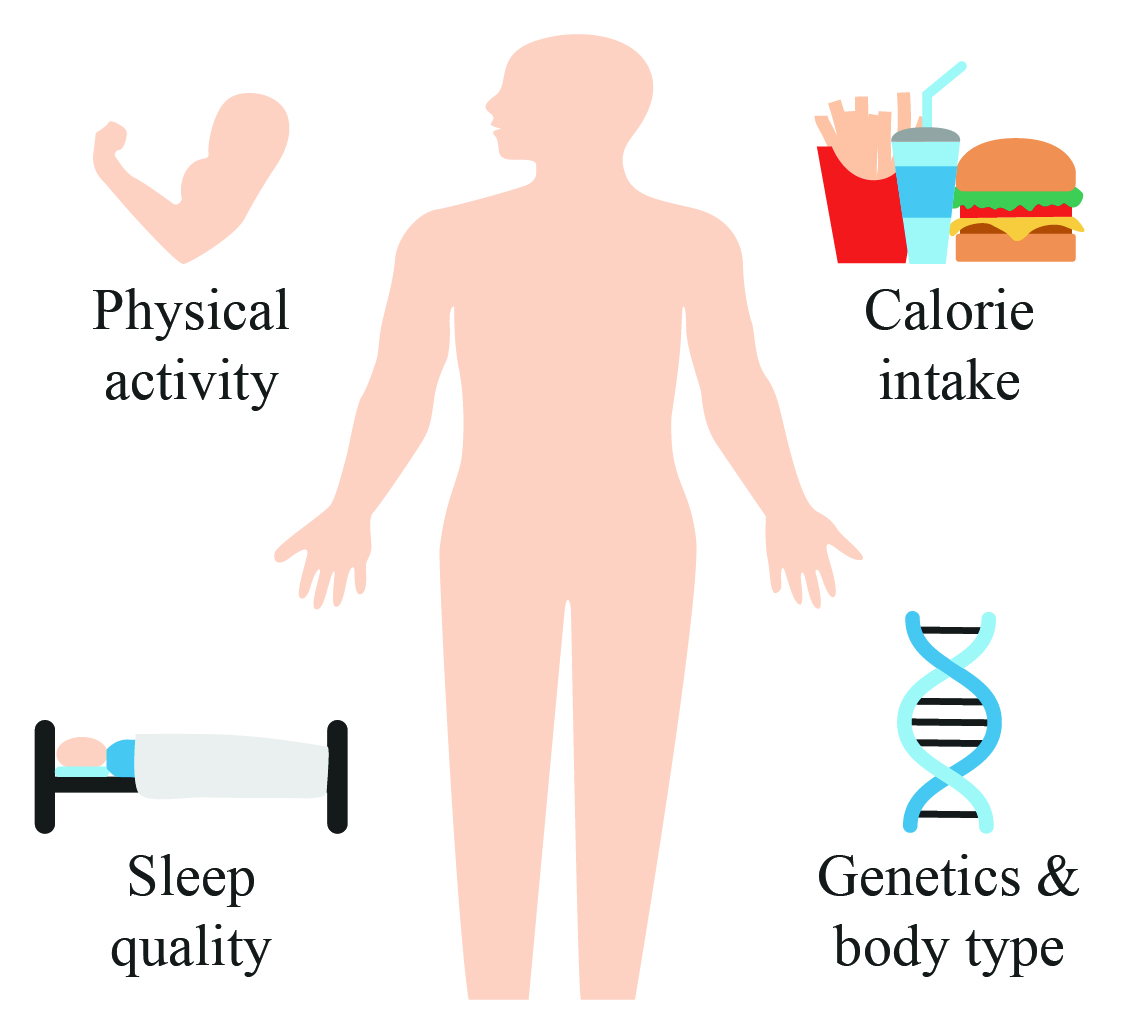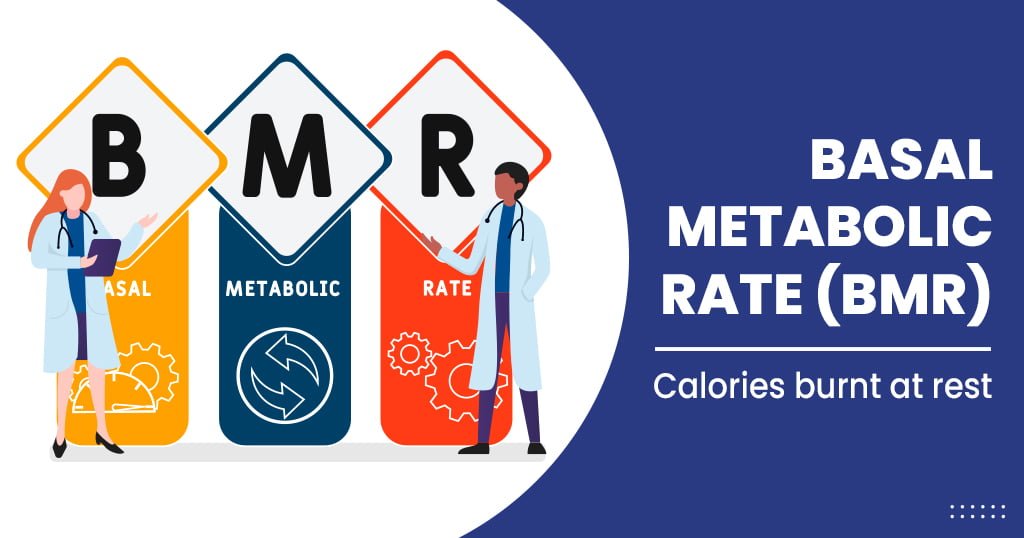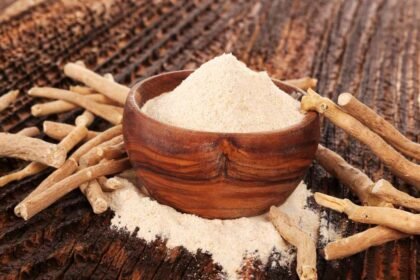The amount of energy that must be consumed at rest is known as the basal metabolic rate (BMR). Some examples of these essential processes that keep us alive are breathing, circulation, cell production, and so on.
Knowing one’s basal metabolic rate (BMR) is crucial for achieving and maintaining a healthy weight and way of life, as it accounts for the bulk of one’s daily caloric expenditure.
This article will explain what basal metabolic rate (BMR) is and why it’s so critical to our health and well-being.
BMR Calculator
What is BMR?
The basal metabolic rate, or BMR, is the number of calories that are burned by the body while it is at rest. This energy is essential for supporting the fundamental activities of the body, including as breathing, circulation, and the regulation of core temperature.
The pace at which these calories are burned by the body is affected by a number of different characteristics, such as age, gender, weight, height, and overall body composition. The basal metabolic rate (BMR) is normally measured in calories either per day or per hour.
Related: How to Calculate Body Mass Index (BMI)
Understanding Your Basal Metabolic Rate
There are many benefits to knowing your basal metabolic rate. Secondly, it gives you a starting point for figuring out your calorie requirements, whether you’re trying to stay the same size, bulk up, or slim down. Finding out your basal metabolic rate (BMR) will help you establish a daily calorie intake target that will lead to your desired body weight.
If your basal metabolic rate (BMR) is 1500 calories per day and your weekly weight loss goal is one pound, your daily caloric intake must be reduced to 1000. (a 500 calorie deficit per day equals a 3500 calorie deficit per week, which is equivalent to one pound of fat loss).

Second, you can better manage your diet and fitness goals if you know your basal metabolic rate. Keeping tabs on your food consumption and energy expenditure will allow you to tailor your diet and exercise plan to your individual needs.
If you have a low basal metabolic rate, for instance, you may need to up your exercise level or reduce your caloric intake in order to stay at a healthy weight.
Finally, understanding your basal metabolic rate (BMR) might aid in spotting the warning signs of metabolic diseases. Changes in basal metabolic rate have been linked to metabolic diseases like hypothyroidism and diabetes.
To keep tabs on these shifts and take the necessary measures to manage your illness, assessing your basal metabolic rate is essential.
Factors that Affect BMR
Many factors, such as age, gender, body composition, hormones, and physical exercise, affect BMR. The effects of each of these on basal metabolic rate are explored in further depth below.
1. Age
One of the most important criteria that determines BMR is age. The basal metabolic rate drops off with advancing age. As we age, our metabolism naturally slows as we lose muscle and develop fat. A drop in basal metabolic rate (BMR) is commonplace beyond the age of 20 and may persist into old life.
2. Gender
Another major determinant of BMR is gender. Muscle mass and testosterone levels contribute to men’s naturally higher basal metabolic rates (BMR). Women, on the other hand, typically have a slower metabolism due to their larger body fat proportion.
3. Body Composition
The ratio of muscle mass to fat mass is an important indicator of basal metabolic rate. Muscle tissue, on the other hand, is more metabolically active than fat tissue, and hence burns more calories even while at rest. Thus, people who are more muscular also tend to have a higher BMR.
4. Hormones
Hormone levels are also very significant in establishing basal metabolic rate. An increase or decrease in basal metabolic rate may occur as a result of changes in thyroid hormone levels.
Hypothyroidism (low levels of thyroid hormones) can slow the metabolism, whereas hyperthyroidism (high levels of thyroid hormones) can speed it up. The basal metabolic rate can also be affected by other hormones including cortisol and insulin.
5. Physical Activity
The amount of exercise one gets is another major influence on basal metabolic rate. Muscle mass increases BMR because of the metabolic demands of maintaining that bulk.
Furthermore, exercise can boost caloric expenditure both during and after the workout. A higher basal metabolic rate is typically associated with a more active lifestyle.
Formula for Calculating BMR
The energy expenditure required by the body at rest is known as the basal metabolic rate, or BMR. BMR can be determined using a variety of formulas that take into account variables including age, gender, weight, height, and body composition. Learn about the most popular methods for estimating basal metabolic rate here.
1. Harris-Benedict Equation
Of the several equations used to determine BMR, the Harris-Benedict Equation is prominent. This formula, which takes into account the subjects’ ages, sexes, weights, and statures, was formulated in the early 20th century. Here is the formula:
Male basal metabolic rate (BMR) formula: 88.362 + (13.397 x kg) + (4.799 x cm) – (5.677 x age in years)
For females, the formula for basal metabolic rate is: BMR = 447.593 + (9.247 x weight in kg) + (3.098 x height in cm) – (4.330 x age in years)
2. Mifflin-St Jeor Equation
Mifflin-St. Jeor Equation is a more modern formula for determining BMR. It replaced the less reliable Harris-Benedict Equation in 1990 and has since been widely accepted as the gold standard. The formula for this equation, which takes into account age, sex, weight, and height, is as follows:
Male basal metabolic rate (BMR) formula: (10 x kg) + (6.25 x cm) – (5 x years) + 5
Female basal metabolic rate (BMR) formula: (10 x weight (kg) + (6.25 x height (cm) – (5 x years (age) -161)
3. Other Formulas
The Katch-McArdle Formula, the Cunningham Equation, and the Schofield Equation are just a few of the many formulas available for determining basal metabolic rate.
Together with age, gender, weight, and height, body composition variables are also factored into these equations. For instance, considering an individual’s lean body mass, the Katch-McArdle Formula would read as follows:
BMR = 370 + (21.6 x lean body mass in kg) (21.6 x lean body mass in kg)
Sample calculations using the Harris-Benedict equation and Mifflin-St Jeor equation
We will present sample calculations for a 30-year-old lady who weighs 68 kg and is 165 cm tall to demonstrate the usage of the Harris-Benedict Equation and the Mifflin-St. Jeor Equation for determining basal metabolic rate.
With the use of the Harris-Benedict Formula:
Formula for Basal Metabolic Rate (BMR): 447.593 + (9.247 x weight in kg) + (3.098 x height in cm) – (4.330 x age in years)
BMR = 447.593 + (9.247 x 68) + (3.098 x 165) – (4.330 x 30)
Metabolic Rate (RMR) = 1,450.89 Calories Daily
By means of the Mifflin-St. Jeor Formula:
The formula for basal metabolic rate is as follows: BMR = (10 x weight in kg) + (6.25 x height in cm) – (5 x age in years) – 161 BMR = (10 x 68) + (6.25 x 165) – (5 x 30) Daily Calories Need = 1,404.25 x BMR = 161
Using BMR to Determine Daily Caloric Needs
If you want to acquire and maintain a healthy weight, knowing your basal metabolic rate can be a useful tool in doing so. We will go over how to calculate your TDEE and daily calorie needs using your basal metabolic rate (BMR).
Determining Total Daily Energy Expenditure (TDEE)
Theoretical daily energy expenditure (TDEE) accounts for both resting and active energy use. Your TDEE is determined by adding your basal metabolic rate and your exercise level together.
To calculate your TDEE, you can use the following formulas:
- Sedentary: BMR x 1.2
- Lightly active: BMR x 1.375
- Moderately active: BMR x 1.55
- Very active: BMR x 1.725
- Extremely active: BMR x 1.9
If your basal metabolic rate (BMR) is 1,500 calories and your activity level is moderate, your TDEE would be 2,325 calories per day.
Calculating daily caloric needs based on activity level
Based on your exercise level and weight objectives, you can determine your TDEE and daily calorie needs. Consume your TDEE to maintain your weight. If you want to lose weight, eat fewer calories than your TDEE; if you want to gain weight, eat more.
To calculate your daily caloric needs, you can use the following formulas:
- To maintain weight: TDEE = daily caloric needs
- To lose weight: daily caloric needs = TDEE – (caloric deficit per day)
- To gain weight: daily caloric needs = TDEE + (caloric surplus per day)
To lose weight, you require a caloric deficit, and to gain weight, you need a surplus. For safe and sustained weight loss, a 500-1,000-calorie deficit is recommended, whereas a 250-500-calorie excess is indicated for healthy weight gain.












